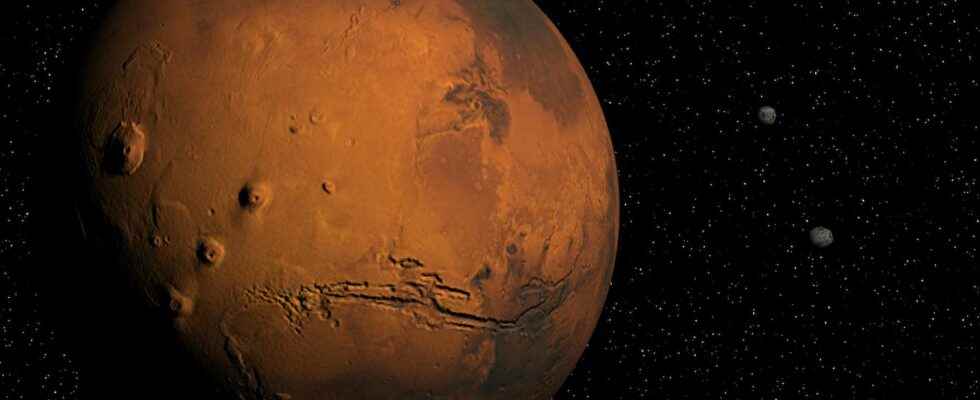A laser and a microphone. That’s all it took Perseverance, NASA’s rover, to send astronomers enough information to determine the speed of sound on Mars. With a little surprise in store.
You will also be interested
[EN VIDÉO] How Perseverance listens to the sounds of planet Mars Since its arrival on Mars on February 18, 2021, the Perseverance rover has used two microphones to pick up the sounds surrounding the rover. The Jet Propulsion Laboratory and Irap currently have about 5 hours of audio recordings, available for listening on the internet.
Since landing on Mars over a year ago, the NASA Perseverance rover explores its environment. He observes it through cameras. He probes it with sensors. And he listens to it through a microphone. In March 2021, NASA unveiled the very first sounds ever recorded from another planet. And since then the astronomers analyze them to extract information, in particular on theatmosphere of the Red Planet.
An international team of researchers has another goal. She reveals today how she was able to determine how fast sound travels on Mars. By measuring the time taken by the sounds emanating from the explosions laser caused by Perseverance to return to the rover mic. Result: on the red planet, sound travels at some 240 meters per second (m/s). For comparison, recall that in theair of our Earth, we are talking about about 343 m/s.
On Mars, funny conversations
Yes, but we know that this is not an absolute value. It varies according to the density of the medium in which the sound moves. It increases with density. No wonder then that it is less in the tenuous atmosphere of Mars. But the speed of sound also varies according to the air temperature, for example. The sound travels a little slower in the cold. It is this property that the researchers exploited to study temperature variations – ultimately faster than they expected – on the surface of Mars. By measuring the speeds of sound each time Perseverance fires the laser. And they intend to continue to collect this type of data to better understand how events affect the temperature of the Red Planet. The arrival of thewinter or even the storms of dust.
The researchers also report that, on Mars, sounds of different frequencies do not propagate at the same speed. It increases by more than 10 m/s above 240 Hz. In question, according to the researchers, the properties of carbon dioxide (CO2) at low pressure. What potentially make communications on Mars a little difficult. With different parts of speech coming to listeners at different times…
Support an editorial team committed to popularizing science on Patreon!
Our mission ? Return the knowledge accessible to everyone.
We produce our own articles, investigations and reports every day, all on a human scale. Support us in this approach and this ambition.
Subscribe to Futura on Patreon!
Two subscription plans are offered to you with the following advantages:
- ” Futura ad-free »: get guaranteed ad-free access to the entire site for €3.29/month (+VAT).
- ” I participate in the life of Futura »: in addition to access without advertising, take part in the life of our independent media (votes, new content, surveys, etc.) for €6.29/month (+VAT).
Interested in what you just read?

